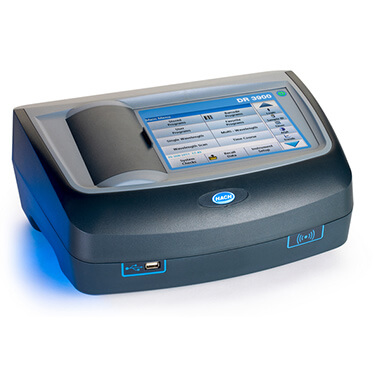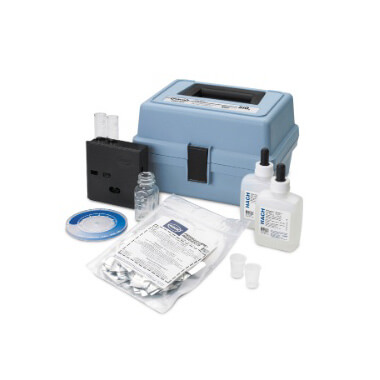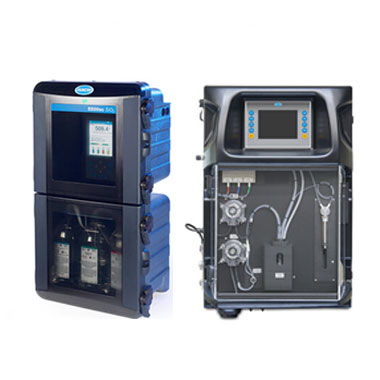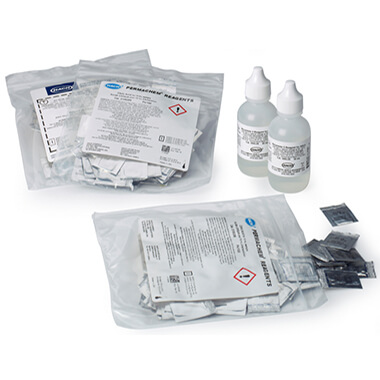-
Products
- Lab Instruments
- Lab Meters and Probes
- Chemistries, Reagents, and Standards
-
Online Analyzers
Ammonium Analyzers Ammonia Monochloramine Analyzers Chlorine Analyzers
- CL17sc
- CL10sc Amperometric
- 9184 sc Amperometric
- Ultra Low Range CL17sc Colorimetric Chlorine Analyser
EZ Series Analysers- Iron
- Aluminium
- Manganese
- Phosphate
- Chloride
- Cyanide
- Fluoride
- Sulphate
- Sulphide
- Arsenic
- Chromium
- Copper
- Nickel
- Zinc
- Ammonium
- Total Nitrogen
- Total Phosphorus
- Phenol
- Volatile Fatty Acids
- Alkalinity
- ATP
- Hardness
- Toxicity
- Sample Preconditioning
- Boron
- Colour
- Nitrate
- Nitrite
- Silica
- Hydrogen Peroxide
- EZ Series Reagents
- EZ Series Accessories
- EZ sc Series Inorganics
- EZ sc Series Metals
- EZ sc Series Nutrients
-
Online Sensors and Controllers
Digital Controllers (Transmitters) Controllers (Analog)
- SC4500
- Orbisphere 410/510 Carbon Dioxide
- Orbisphere 410/510 Oxygen
- Orbisphere 410/510 Ozone
- Orbisphere 51x Hydrogen
- Orbisphere 51x Nitrogen
- Pro Series
pH & ORP Sensors- 1200-S pH
- 12mm pH/ORP
- 8362 sc High Purity
- Combination pH/ORP
- Differential pH
- Digital Differential ORP
- Digital Differential pH
- LCP ORP
- LCP pH
Dissolved Oxygen Sensors- 2582sc
- 5500 Clark DO
- 9582 sc
- LDO 2 sc
- Orbisphere 311xx
- Orbisphere GA2x00
- Orbisphere K1X00
- Orbisphere M1100
- Samplers
- Test Kits & Strips
- Microbiology
-
Lab Equipment and Supply
Apparatus
- Brushes
- Clamps, Rings & Stands
- Crucibles
- Crucibles & Casseroles
- Dispensers & Droppers
- Grab Samplers
- Oil and Grease
- Other Apparatus
- Pipet Aids
- Pipettes
- Racks
- Stir Bars
- Tubing
- Weighing Accessories
Instruments- Balances
- Hot Plates & Stirrers
- Moisture Analysers
- Other Instruments
- Ovens & Incubators
- Thermometers
- Timers
- Vacuum Pump
- Claros Water Intelligence System
- Automated Lab Systems
- Electrochemistry
- Parameters
-
Software Solutions
-
Claros Water Intelligence System
Product Pillars Process Management
- Solutions For:
- BOD/COD Removal
- Nitrification/Denitrification
- Phosphorous Removal
- Sludge Management
Data Management- Solutions For:
- Collection
- Visualization & Analytics
- Reporting
- Data Accuracy
Instrument Management- Solutions For:
- Maintenance
- Troubleshooting
- Remote Access
- Lab and Process Comparison
Industry Challenges Regulatory Compliance Cost Savings Remote Operations Process Optimisation Equipment MaintenanceClaros News Claros Software Release Notes
-
Claros Water Intelligence System
- Industries
- Brands
- Support
- News & Events
Hach South Africa
Choose your country or region:
Europe
Americas
Asia - Australasia
- Australia
- Mainland China
- India
- Indonesia
- Japan
- Malaysia
- New Zealand
- Philippines
- Singapore
- South Korea
- Thailand (Thai)
- Taiwan
- Vietnam
Middle East - Africa
Silica
What is Silica?
Silica, also known as silicon dioxide (SiO 2) or mineral quartz, is a derivative compound of the chemical element silicon (Si) and makes up approximately 59% of the Earth's crust and a large part of common sand. Silicon links up with oxygen to form silicates, which are the most common suite of minerals. Silica is found as dissolved silica or suspended silicate particles in most natural waters. Silica is used in many industrial applications, including food and pharmaceutical production, as an additive and for water filtration.
Why Measure Silica?
Most water contains an abundance of silicon and its derivatives, silica (SiO 2) or silicates (SiO 4 – and SiO 3 2–). Silica concentration in water is commonly less than 30 mg/L, although concentrations higher than 100 mg/L are not unusual. Concentrations exceeding 1000 mg/L are possible in brines and brackish water.
Silica and silicates are added to water as conditioners, detergents and corrosion inhibitors. However, silica in water can cause significant problems for industries, primarily in boiler and steam applications. High pressures and high temperatures cause silica deposits on boiler tubes and heat exchangers. These glassy deposits lower the efficiency of heat transfer and lead to premature failure. Silica deposits on steam turbine blades decrease efficiency and necessitate costly downtime for cleaning. Silica levels must be kept below 0.005 mg/L (5 ppb) in very high-pressure applications.
Measuring silica in water is useful when the efficiency of demineralizers is monitored. Testing for silica (one of the first impurities detected when the exchange capacity of a demineralizer is exhausted) provides a sensitivity check of demineralizer performance.
Analytical procedures for silica include the Silicomolybdate Method for high range measurement and the Heteropoly Blue Method for low range measurement. The Heteropoly Blue method is an extension of the Silicomolybdate method to increase sensitivity.
Silica methods from Hach ® determine molybdate-reactive silica. The terms 'molybdate-reactive' or 'molybdate-unreactive' do not imply reactivity, or lack of it, toward other reagents or processes. Occasionally, a sample contains silica which either reacts very slowly with molybdate or does not react at all. In at least one of its forms, silica does not react with molybdate even though it is capable of passing through filter paper being present in dissolved or colloidal form. It is not known to what extent such “unreactive” silica occurs in waters. “Molybdate-unreactive” silica can be converted to the “molybdate-reactive” form by heating or fusing with alkali, such as in a sodium bicarbonate digestion. See Standard Methods 4500-SiO 2 for details.
In both Silicomolybdate and Heteropoly Blue Methods the color formed is directly proportional to the amount of molybdate-reactive silica present in the original sample. Total silica can be determined by performing analyses using the Electrothermal Atomic Absorption Method (Standard Methods 3113B), the Inductively Coupled Plasma Mass Spectrometric Method (Standard Methods 3125) or the Inductively Coupled Plasma Method (Standard Methods 3120). Terms such as “colloidal,” “crystalloidal,” and “ionic” have been used to distinguish among various forms of silica but such terminology cannot be substantiated. Hach does not provide solutions or support for any of the methods for total silica.
At Hach, find the testing equipment, resources, training and software you need to successfully monitor and manage silica levels in your specific process application.
Featured Products to Measure Silica
The 5500sc Silica Analyzer requires only two liters of reagent for the analyzer to perform unattended for up to 90 days; twice as long as the predecessor Series 5000 instruments.
Request a QuoteHach is known for spectrophotometry innovations and offers many of the leading spectrophotometric instruments in the water analysis market.
Request a QuoteSilica Chemistries, Reagents and Standards
Hach chemistries are rigorously tested in combination with our packaging and instruments to ensure the highest possible system performance.
Request a QuoteThe DR900 Portable Colorimeter allows for quick and easy access to your most frequently used testing methods in less than four clicks.
Request a QuoteThe EZ Series Online Analyzers offer multiple options to monitor silica in water. Typical applications are steam and power generation, surface water and process water.
Request a Quote
Which Processes Require Silica Monitoring?
Power & Steam
Boiler Water: Scale formation due to hardness, silica, and corrosion product deposits can decrease the heat exchange capacity and global efficiency of the boiler. Steam quality varies with the concentration of impurities in the boiler water and the potential mechanical carryover of contaminated water droplets into the steam. The higher the operating pressure of the boiler, the higher the purity requirements since contaminant carryover is promoted. Silica measurements (drum boiler blowdown): silica build-up in the boiler depends on the drum pressure, < 5 ppb.

Chemical, Oil and Gas Production (Steam Assisted Gravity Drainage, SAGD)
Silica is analyzed in the boiler feedwater between the WAC (weak acid cation) softeners (primary and polishing) and the boiler feedwater tank, prior to steam generation.

How is Silica Monitored?

Laboratory Testing
Hach DR3900 Spectrophotometer Lab Instrument
Heteropoly Blue Method 1 Method 8282 (ULR – Ultra-Low Range) 3 to 1000 ug/L SiO 2

Portable Testing (color discs and colorimeters)


Frequently Asked Questions
How do I clean my lab glassware and Pour-Thru cell for the ULR Method 8282?
The Method 8282 has specific recommendations for maintenance of the labware and cleaning the Pour-Thru cell.
Labware cleaning:
Fully clean all containers that are used in this test to remove any traces of silica. Use plastic containers for all analysis and storage because glass can contaminate the sample with silica. Small bottles or flasks with screw-type closures work well.
- Clean containers (do not use phosphate detergents), then rinse with high quality deionized water of low-level silica concentration.
- Soak for 10 minutes with a 1:50 dilution of Molybdate 3 Reagent in low-level silica water.
- Rinse repeatedly with either low-level silica water or the sample before use. Keep containers tightly closed when not in use.
- Fill the Pour-Thru Cell with this same mixture of Molybdate 3 and water. Soak for 10 minutes.
- Rinse with low-level silica water.
Keep containers tightly closed when not in use and rinse the labware repeatedly with either low-level silica water or the sample before use.
Pour-Thru cell cleaning:
The Pour-Thru Cell can collect a buildup of products with color, especially if the reacted solutions stay in the cell for long periods of time after measurement.
- Rinse the Pour-Thru Cell with a 1:5 dilution of ammonium hydroxide solution to remove the color.
- Fully rinse with deionized water.
- Put a cover on the Pour-Thru Cell funnel when it is not in use.
The following can also be done to clean the Pour-Thru cell:
- Clean Pour-Thru cell assembly with phosphate free detergent, then rinse with high quality DI water.
- Soak for 10 minutes in 1:50 dilution of molybdate 3 reagent in low-level silica water. This should rid the sample of any adhering silica.
What concentration ranges can the Silica EZ Series analyze?
The EZ Series EZ1034 can analyze from 1 µg/L up to 100 µg/L of Si and the EZ1035 can measure up to 1 mg/L Si with an internal dilution.
How to verify or adjust the reagent blank on the 5500sc Silica Analyzer in the field?
The reagent 1 (R1) blank value can be found on the reagent bottle. If the sample has very low silica concentrations and has issues with high readings (one to two ppb high), which are not caused by blueing of the sample cell or instrument issues, then a field blank determination can be performed to adjust the blank value. Clean the sample cell by following the procedure listed in the user manual.
The method used to determine the blank on the 5500sc Silica Analyzer is the standard additions method. This method requires a stable sample concentration feed to the analyzer for the duration of the testing, which will be a couple hours. Begin by performing a grab sample test with the sample water, and record the analyzer reading. Collect 500 ml of sample, and to this add 2 ml of 500 ppm standard, then run this spiked sample as a grab sample and record the reading. Collect 500 ml of sample, and to this add 4 ml of 500 ppm standard, then run this spiked sample as a grab sample and record the reading. Repeat running grab samples spiked with 6, 8, and 10 ml, recording each reading.
When the spiked grab sample readings have been collected, then chart these on graph paper (or in Excel). Spike value - 0, 2, 4 etc., ppb is the x-axis; sample reading in the y-axis. Draw a best-fit straight line through the charted points. Where the line crosses the x-axis is the value of the reagent blank. (The intercept will be a negative value, but it is entered as a positive blank value.)
Determination of reagent blank is performed at concentrations near the detection limit of the analyzer, and the spiked sample readings noted above are subject to noise and interference. The labware and mixing vessels must be scrupulously clean for good results. It is best to repeat each standard addition at least three times to assure results are repeatable. Final accuracy of the blank determination will probably be around +/- 1 ppb, and very likely in this range of agreement with the value on the Molybdate reagent bottle.
A disagreement of 1-2 ppb between two analyzers running sample that is itself only 1-2 ppb (or even less) can be very difficult to isolate. If the process system is stable and runs a known baseline response following regeneration, and no other fault can be found in the analyzer, the most practical solution may be to adjust the blank value on this analyzer so that readings match the known baseline.
What is the shelf life of the reagents and standards used for the 5500sc Silica analyzer?
The reagents and standards for the 5000sc have the following shelf life:
5500sc silica reagent set product # 6783600 includes:
- 5500sc reagent 2 silica 2-liter product # 6774902 has a shelf life of 720 days from the date of manufacture unopened.
- 5500sc standard 1 silica 2-liter product # 6775002 has a shelf life of 360 days from the date of manufacture unopened.
- 5500sc reagent 3 silica 1.8-liter product # 6775202 has a shelf life of 720 days from the date of manufacture unopened.
- 5500sc reagent 3 silica powder 205G product # 6775355 has a shelf life of 1800 days from the date of manufacture unopened unprepared.
- 5500sc reagent 1 silica 2-liter product # 6774802 has a shelf life of 720 days from the date of manufacture unopened.
The exact date and month of expiration will be printed on the label for each bottle.
Are the Series 5000 silica/phosphate reagents compatible with the 5500sc silica/phosphate system?
The reagents for the 5500 silica/phosphate analyzer are a different concentration versus the older Series 5000 silica/phosphate analyzers reagents and therefore, are not compatible. Due to the difference in concentrations, the reagent volumes are different and can cause accuracy issues on a different model of analyzer.
Please note, the calibration standards for the 5500sc silica/phosphate analyzers are the same with the Series 5000 model.
If a standard bottle for the Series 5000 is unopened and has not expired, the contents may be used to calibrate for the same parameter on a 5500sc analyzer.
Before use transfer the content to the correct bottle style for the 5500sc systems. An incorrect bottle type may result in an air or standard leak that could damage the system.




